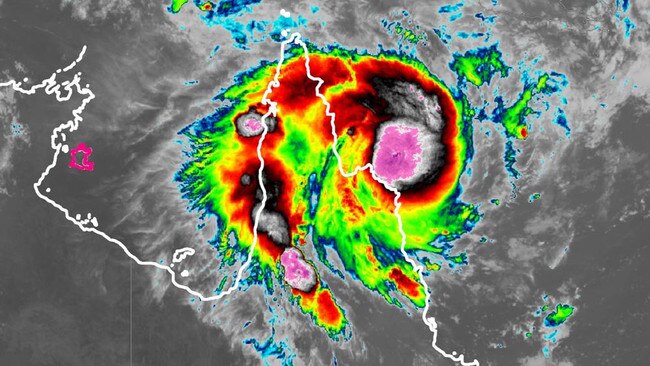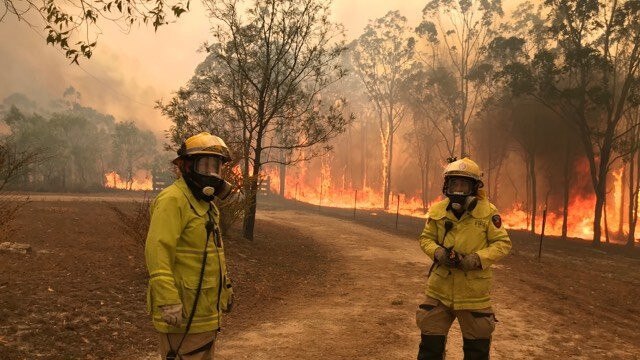Floods, fire, storms, cyclones: Qld braces for summer of hell
As the state braces for another La Nina round compounded by forecast storms, cyclones and fire, new data reveals Queenslanders aren’t prepared.
QLD weather news
Don't miss out on the headlines from QLD weather news. Followed categories will be added to My News.
As the state braces for another La Nina round compounded by the usual summer storms, cyclones and fire risk, new data has revealed Queensland recorded its worst summer in six years for severe weather damage insurance claims.
The data, released by NRMA Insurance as part of their Wild Weather Tracker, showed nearly two-thirds of home damage claims and one quarter of motor claims during winter were caused by weather events this year.
The Gold Coast accounted for the largest amount (12 per cent) of claims, followed by the Sunshine Coast (eight per cent), and the Wide Bay, Logan, and Ipswich areas each with seven per cent.
The Mackay/Whitsunday area was found to be the most prepared region for severe weather, followed by the Far North, Wide Bay, and Gold Coast regions.

Worryingly, the research also found that despite the increase in severe weather related insurance claims this winter, the number of people prepared for dangerous weather has fallen 11 per cent from the same time period in 2021.
Only 37 per cent of Australians have taken steps to ready themselves for what the coming months may bring.
Of those who have not taken steps to prepare, 42 per cent say they don’t think their area will be impacted, 27 per cent don’t know where to start and 22 per cent find it hard to find time to prepare.
NRMA Insurance Meteorologist Dr Bruce Buckley said the data was particularly concerning given weather experts are predicting a spring and summer of wild weather as a third consecutive La Nina descends.
“Over the next few months we will see multiple severe weather drivers reinforcing each other, including La Niña weather conditions and a negative Indian Ocean Dipole, which are likely to bring a much wetter than average spring across the eastern states,” Dr Buckley said.
“This is a rare coincidence of climate drivers that favour bursts of very heavy rainfall capable of producing flash and river flooding through spring and early summer.”

Dr Buckley said clearing gutters was the most proactive step homeowners can take to ensure they are prepared for heavy rain.
But Queenslanders will face severe weather not just in the skies, but on the ground as well. Dr Buckley said Queensland is also at an increased risk of a severe bushfire season, and warned homeowners should take precautions now to make sure their homes are safe.
“There will be some breaks in the rain for two to three weeks where it will be dry,” he said.
“If you‘ve got two to three weeks of drier and warmer than normal conditions, even though we’re not talking about a Black Saturday or Black Summer type of situation, for the first time in a few years it looks like there will be a few bushfire outbreaks on top of everything else.”
Dr Buckley said the areas of concern for bushfires were the Sunshine and Gold Coast Hinterlands, the Darling Downs and Eucalypt forests across the state.
He said the current forecasts were conducive to severe storms, which can cause bushfires from lightning strikes impacting outside the rainfall area.

“They’re the kind of severe thunderstorms that can, on occasion, produce the large giant hail about 5cm in diameter.”
“Queensland is really a multiple risk region with the potential for lightning induced files in those dry spells, and then we‘ll obviously be at risk of extremely heavy rainfall and that’s where the flash flooding and the river flooding comes in.”
Experts suggest homeowners living in areas at risk of bushfires clear an area at least 10m around their home of long grass and flammable material, to build a buffer zone between flames and the home.
“And in Queensland you‘ve got the older style Queensland type of house and so in those cases there can be access to dry vegetation for sparks that blow underneath the house if it’s a raised floor,” Dr Buckley said.
“It’s an absolutely devastating situation if you get sparks under the house and it lights a fire, so making sure there is no access there and into roof cavities as well is crucial.”

Dr Buckley flagged the risk of an active cyclone season too. He said areas like Rockhampton are not unlikely to experience a cyclone akin to Cyclone Marcia in 2016, while further inland, areas like Longreach are at risk of monsoonal flooding across channel country.
“Unfortunately, in some of those more remote parts of Queensland the isolation can last a couple of weeks in some circumstances, so in many respects the more isolated the communities in Queensland, the better prepared they need to be.”
“The warning is to make sure you’re insured and prepared for the risks, because at least if you’re insured the clean-up is faster and less painful.”



